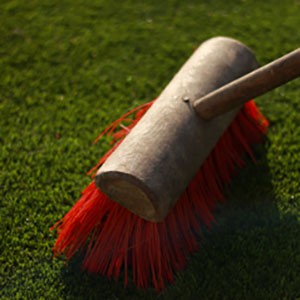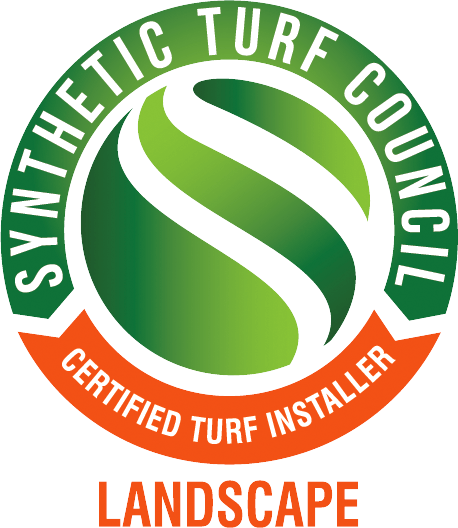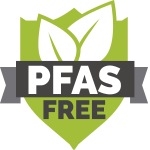Maintenance Of Artificial Grass Tips That Will Keep Lawns Crisp, Green, Luscious, Neatly Manicured, And Ready For Enjoyment Year Round
Eliminating a major expense, such as cutting and watering a lawn, is a unique opportunity that literally pays for itself, and with a little maintenance you can keep your synthetic turf looking great for years to come. Although, the maintenance of artificial grass is far less than that of a real lawn, and way easier, lots of owners find themselves asking how to maintain artificial grass. We recommend you follow these easy tips on how to maintain artificial grass on a regular basis and brush regularly, remove leaves and weeds, and rinse dust.

Brush Regularly
In order to keep the synthetic turf in the best possible condition, it is recommended to regularly brush the artificial grass in accordance with the amount of ‘traffic’ is gets. Brushing the artificial grass will keep the fibers upright for a longer time, enhancing the natural look of your lawn.
Remove Leaves
When leaves aren’t removed, they will decay and lead to growth of moss and weeds. A normal leaf blower or rake can be used to clean your artificial grass surface from fallen leaves and other debris. You should remove leaves and other debris as often as possible.

Heavy Items
Placing heavy items on your synthetic grass surface, like an inflatable swimming pool or flower pots, will flatten the blades. When the heavy item is removed, use a broom and brush the fibers back up again to make your lawn return to its original beauty. Over time, it is possible that the imprint stays visible. Remember to always brush against the natural pile direction of your artificial grass lawn.

Winter Season
Winter conditions are not a problem for your synthetic grass, it will not damage due to frost or cold weather. In cases where an ice layer forms on the artificial grass it must be allowed to melt naturally and not removed manually to avoid damaging the fibers.

Fire And Hot Items
At all times prevent fire and hot items like BBQ ashes and cigarettes from getting into direct contact with your artificial grass lawn as this will potentially cause melting of the turf. Repairing is possible but it will be slightly visible.

Weed Control
Ensure that weeds are removed regularly and before they have a change to take root. Weeds are specially common around the edges, as that is usually in direct contact with real grass. You can use weed killers and other products to take care of the weeds.
Frequently Asked Questions
How do you care for artificial grass?
In order to maintain the natural look and beauty of your Synthetic Grass installation it is recommended that, on a regular basis:
- You remove organic debris such as leaves and seeds.
- Remove weeds, specially growing around the edges.
- Brush your pile to maintain its upright position.
- Remove Animal waste and rinse weekly.
This will ensure your artificial grass remains green and welcoming.
Can dogs pee and poop on artificial grass?
Synthetic turf is a pet-friendly option, and pet owners can rest assured that with a little additional maintenance they can keep their lawns looking great. It is completely safe for your pet to pee and poop on artificial grass.
Always allow solid waste to dry and then dispose and rise the area. The area should be hosed down habitual basis to promote the drainage of urine as well as to keep the surface hygienic and unsoiled. Enzyme neutralizers or turf deodorizer can effectively limit and control odors.
How long does artificial turf last?
Artificial turf will give you up to 20 years of maintenance-free life depending on the application, installation and volume of traffic in the area. Fake grass won’t fade or flatten. It is UV stabilized and will retain its color and integrity season after season.
Is artificial grass sharp or prickly?
Some people worry that artificial grass can be prickly and sharp. Order yourself some samples if you’re concerned. You’ll see that it’s just as soft and comfortable as the real thing, and with the proper artificial grass maintenance you can keep that softness for years to come.
How does synthetic turf impact the environment?
Synthetic turf has a measurable, positive impact on the environment. Depending on the region of the country, a typical grass sports field requires between 500,000 to a million gallons of water or more each year. During 2010, between four to eight billion gallons of water were conserved through its use. According to the U.S. Environmental Protection Agency (EPA), the average American family of four uses 400 gallons of water a day. Therefore, a savings of four to eight billion gallons of water equates to the annual water usage of over 27,000 to 55,000 average American families of four.
Tax credits and rebates are being offered to residential and corporate users by an increasing number of local governments in light of the tremendous impact on water conservation. The Southern Nevada Water Authority estimates that every square foot of natural grass replaced saves 55 gallons of water per year. If an average lawn is 1,800 square feet, then Las Vegas homeowners with synthetic turf could save 99,000 gallons of water each year or about $400 annually. In Atlanta, homeowners could save $715 a year, not including much higher sewer charges.
The estimated amount of synthetic turf currently installed has eliminated the need for millions of pounds of harmful pesticides and fertilizers, which has significant health and environmental implications. For example, according to the North Carolina Department of Environment and Natural Resources, polluted storm water runoff is the number one cause of water pollution in their state, with common examples including over fertilizing lawns and excessive pesticide use.
In addition, synthetic turf helps reduce noxious emissions (the EPA reports that a push mower emits as much pollution in one hour as 11 cars and a riding mower emits as much as 34 cars) and reduces grass clippings, which the EPA states are the third largest component of municipal solid waste in landfills.
Is synthetic turf safe?
More than 50 independent and credible studies from groups such as the U.S. Consumer Product Safety Commission, and statewide governmental agencies such as the New York State Department of Environmental Conservation, New York State Department of Health and the California Environmental Protection Agency, have validated the safety of synthetic turf.
Recent highlights include:
- In October 2010, the California Office of Environmental Assessment completed its multi-year study of air quality above crumb rubber infilled synthetic turf, and bacteria in the turf, and reported that there were no public health concerns.
- In July 2010, the Connecticut Department of Public Health announced that a new study of the risks to children and adults playing on synthetic turf fields containing crumb rubber infill shows “no elevated health risks.”
- The California EPA released a report dated July 2009 which indicated there is a negligible human health risk from inhaling the air above synthetic turf.
- Independent tests conducted by the New York State Department of Environmental Conservation and New York State Department of Health, released in May 2009, proved there were no significant health concerns at synthetic turf fields.
- In July 2008, a U.S. Consumer Product Safety Commission staff report approved the use of synthetic turf by children and people of all ages.
Is Artificial Grass Permeable?
The first thing to know is that not all synthetic turf is created equally. The second thing to know is that not all manufactured lawn installations are completed to the same standard. To help ensure a satisfactory end product, you will need to make sure you are working with a reputable, knowledgeable synthetic grass installer, and EasyGrass has all the categories beat. We can assist you in selecting the right type and quality of turf for your project.
When properly installed, your artificial turf should have drainage equivalent to or better than natural grass. It is often the case that properly installed artificial grass lawns have significantly better drainage than natural lawns.
Does artificial grass fade?
Easygrass artificial grass has the most technologically advanced synthetic grass products that feature built-in U.V. inhibitors. These U.V. inhibitors are incorporated within the yarn process and will allow the yarn to hold color even in the most harsh and sunny conditions. The turf color is designed to last 15 to 20 years.







